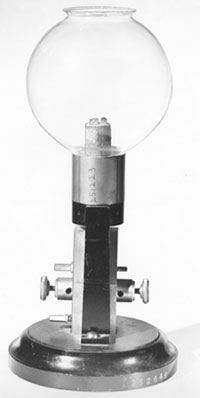Jablochkoff Candles in Paris
The Jablochkov (or Yablochkov) candle is a kind of electric carbon arc light invented by Russian electrical engineer and business man Pavel Nikolayevich Yablochkov.
Pavel Yablochkov, a military engineer by training, opened up a workshop in Moscow for experimenting in electric lighting. In 1876, he made his major invention – the first model of an electric arc lamp. Later that year he went to Paris and built an industrial model of the electric candle. In Paris he further developed the idea and built the arc light into a complete system of electric lighting. This Yablochkov system was powered by direct current dynamos fitted with an inverter to supply alternating current. In 1877, the first public use of the Yablochkov candles was made at the Magasins du Louvre.
In 1878, during the Exposition Universelle in Paris, Yablochkov used the opportunity to make an international demonstration of his arc lights. He successfully installed sixty-four of his arc lights along the half-mile length of the Avenue de l’Opera, Place du Theatre Francais and around the Place de l’Opera. Yablochkov deployed Michael Faraday’s discovery of induction to create a continuous current of high voltage. Soon it was found out that the electric candles could be powered on a seven-mile circuit. The Paris demonstration of the Yablochkov lights had a global impact. Within two years, over 2,500 electric candles were set up in Europe. The municipalities of Paris, London, and Havre, adopted it after long trials, especially for lighting docks and important streets. It was far more advantageous over other carbon arc designs. By 1880, the Yablochkov candles reached the U.S. The Concert Hall of Koster & Bial, in New York City, was lighted by the electric candles every night. People were amazed by the simplicity of the mechanism, yet also by the steadiness and softness of the light, as The New York Times reported in1880.
References
‘The Jablochkoff Electric Light: From the New-York Daily Commercial Bulletin’, The New York Times, November 10, 1880
